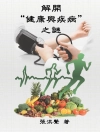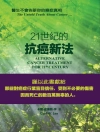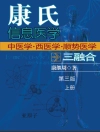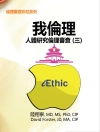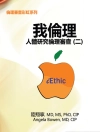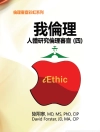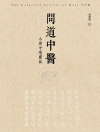Now in its eighth edition, this highly acclaimed, newly revised and expanded text continues to deliver innovative practice guidelines for evidence-based complementary and alternative therapies that can easily be incorporated into curriculum and applied directly to practice. The book describes holistic treatments that are culturally appropriate for clients across the life span and NCLEX®-relevant content appropriate for preparation of advanced practice nurses.
The eighth edition reflects an expanding interest in these therapies worldwide and features numerous sidebars by international contributors who provide a global perspective that builds readers’ understanding of the cultural derivations and uses of complementary therapies. The new edition also highlights digital and technical advances, provides key updates to foundations for practice, and describes cutting-edge research. Included is a description of the evolution and establishment of the National Center for Complementary and Integrative Health (NCCIH) and its current national agenda. Updated legal information regarding regulation and credentialing, enlarged safety and precaution content, and the inclusion of a broad range of therapies add to the utility of this new edition.
The only book about complementary and alternative therapies written specifically for nurses that focuses on essential evidence for practice, the text uses a consistent format to present a definition and description of each therapy, a summary of how it evolved, and a rationale for its use. The scientific basis and research evidence for use of each therapy in a variety of specific patient populations is emphasized. Sidebars in each chapter describe the use of various therapies in different settings worldwide. All chapters provide practical guidelines for using the therapies to promote health and comfort while increasing patients’ well-being and satisfaction with care.
New to the Eighth Edition:
- Updated research-based content, including new cutting-edge references
- Expanded content about technology and digital resources
- New Foreword and endorsements by prominent scholars
- Describes key steps in evolution of the NCCIH and its current national agenda
- Highlights indigenous culturally based therapies
- New chapter: “Systems of Care: Sowa Rigpa—The Tibetan Knowledge of Healing”
- New chapter: “Independent Personal Use of Complementary Therapies”
- New chapter: “Afterword: Creating a Preferred Future—Editors’ Reflections”
- Updated information on legal concerns, regulation, and credentialing
- Enlarged safety and precaution content
- Helpful tips for selecting practitioners
- Use of therapies for nurses’ and patients’ self-care
- Strategies for initiating institution-wide therapies and programs
Key Features:
- Delivers comprehensive and current guidelines for therapy use
- Written by highly respected nurse experts
- Employs a consistent format for ease of use
- Describes instructional techniques and safety precautions for each therapy
- Provides a strong international focus
Tabella dei contenuti
Contents
Contributors
International Sidebar Contributors
Foreword by Connie White Delaney, Ph D, RN, FAAN, FACMI, FNAP
Preface
PART I FOUNDATIONS FOR USE OF COMPLEMENTARY THERAPIES
1. Evolution and Use of Complementary Therapies and Integrative Healthcare Practices
Mariah Snyder and Ruth Lindquist
2. Presence
Mariah Snyder
3. Therapeutic Listening
Shigeaki Watanuki, Mary Fran Tracy, and Ruth Lindquist
4. Creating Optimal Healing Environments
Mary Jo Kreitzer and Terri Zborowsky
5. Systems of Care: Sowa RigpaThe Tibetan Knowledge of Healing
Miriam E. Cameron
PART II MINDBODYSPIRIT THERAPIES
6. Imagery
Maura Fitzgerald and Mary Langevin
7. Music Intervention
Linda L. Chlan and Annie Heiderscheit
8. Humor
Shirley K. Trout
9. Yoga
Miriam E. Cameron and Corjena K. Cheung
10. Biofeedback
Marion Good and Jaclene A. Zauszniewski
11. Meditation
Cynthia R. Gross, Michael S. Christopher, and Maryanne Reilly-Spong
12. Journaling
Mariah Snyder
13. Storytelling
Margaret P. Moss
14. Animal-Assisted Therapy
Susan OConner-Von
PART III MANIPULATIVE AND BODY-BASED THERAPIES
15. Massage
Melodee Harris
16. Tai Chi
Kuei-Min Chen
17. Relaxation Therapies
Susan M. Bee, Elizabeth L. Pestka, and Michele M. Evans
18. Exercise
Dereck L. Salisbury, Diane Treat-Jacobson, Ulf G. Bronäs, and Ryan J. Mays
PART IV BIOLOGICALLY BASED THERAPIES
19. Aromatherapy
Linda L. Halcón
20. Herbal Medicines
Gregory A. Plotnikoff and Angela S. Lillehei
21. Functional Foods and Nutraceuticals
Melissa H. Frisvold
PART V ENERGY THERAPIES
22. Light Therapy
Niloufar Niakosari Hadidi
23. Healing Touch
Alexa W. Umbreit and Lauren Johnson
24. Reiki
Debbie Ringdahl
25. Acupressure
Pamela Weiss-Farnan
26. Reflexology
Thóra Jenný Gunnarsdóttir
PART VI EDUCATION, PRACTICE, RESEARCH, AND PERSONAL USE
27. Integrating Complementary Therapies Into Education
Carie A. Braun
28. Integrating Complementary Therapies Into Nursing Practice
Susanne M. Cutshall and Elizabeth L. Pestka
29. Perspectives on Future Research
Yeoungsuk Song, Sohye Lee, and Ruth Lindquist
30. Independent Personal Use of Complementary Therapies
Barbara Leonard and Mariah Snyder
31. Afterword: Creating a Preferred FutureEditors Reflections
Ruth Lindquist, Mary Fran Tracy, and Mariah Snyder
Index
Circa l’autore
Mariah Snyder, Ph D, is professor emerita, University of Minnesota School of Nursing. Independent nursing interventions and complementary therapies have been the focus of her career. Dr. Snyder studied the effects of complementary therapies in promoting the health and well-being of elders, particularly those with dementia. She was a founding member of the Earl E. Bakken Center for Spirituality and Healing at the University of Minnesota and instrumental in the establishment of the Center’s graduate interdisciplinary minor. In retirement, she continues to incorporate complementary therapies in her volunteer activities with women in recovery programs, elders, and in her personal wellness.


